These days, most traffic uses the Great St Bernand tunnel, which opened in 1964, so the pass itself, which dates back to the Bronze Age, is really only for the intrepid among us. Like many Alpine passes, it’s only open from June to October. Today, it’s maintained in perfect shape, far better than I remember, in fact.
But some 5km from the top, the clouds start to come in, and the last part is swathed in cloud, cutting visibility down to a few yards. What a bummer.
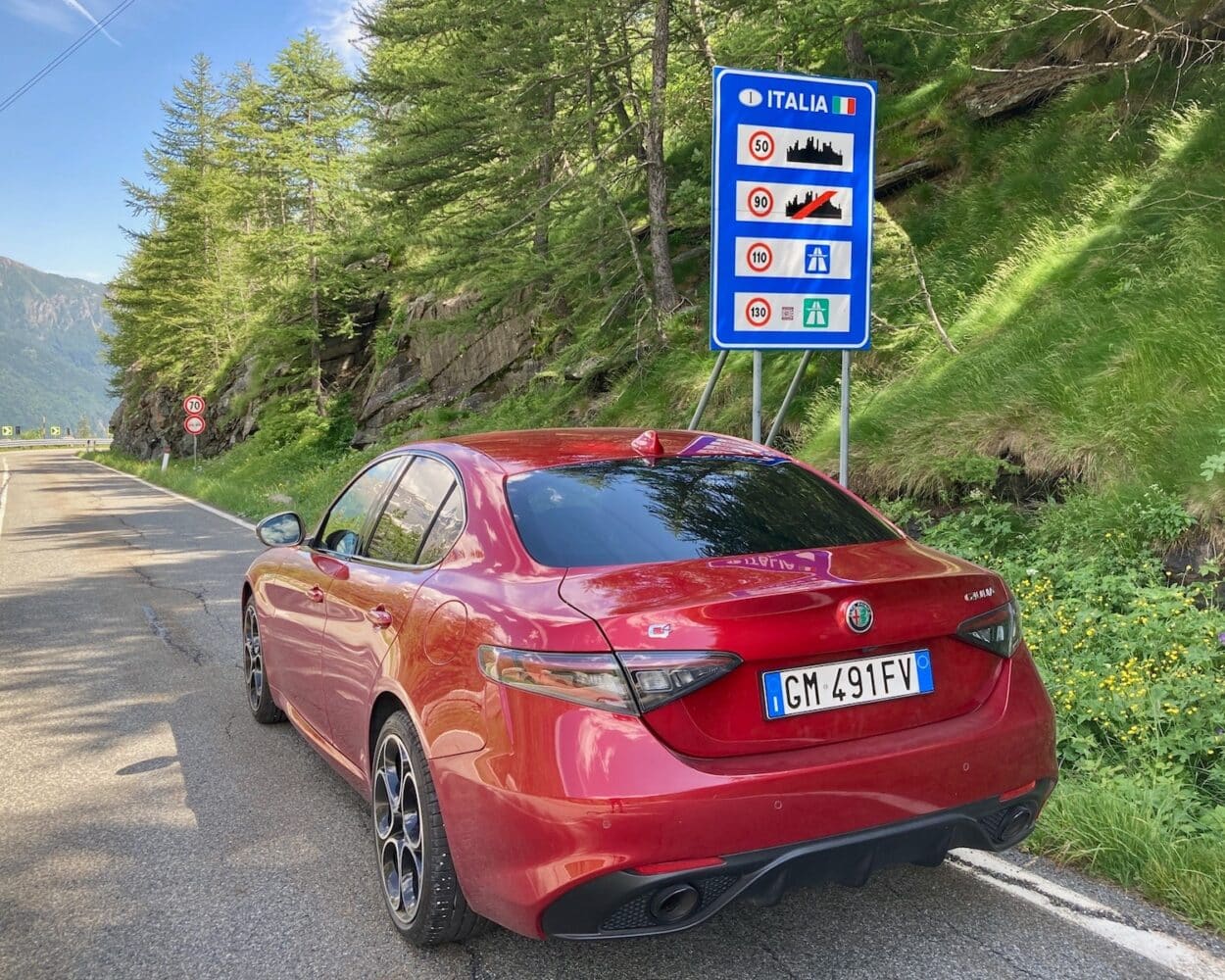
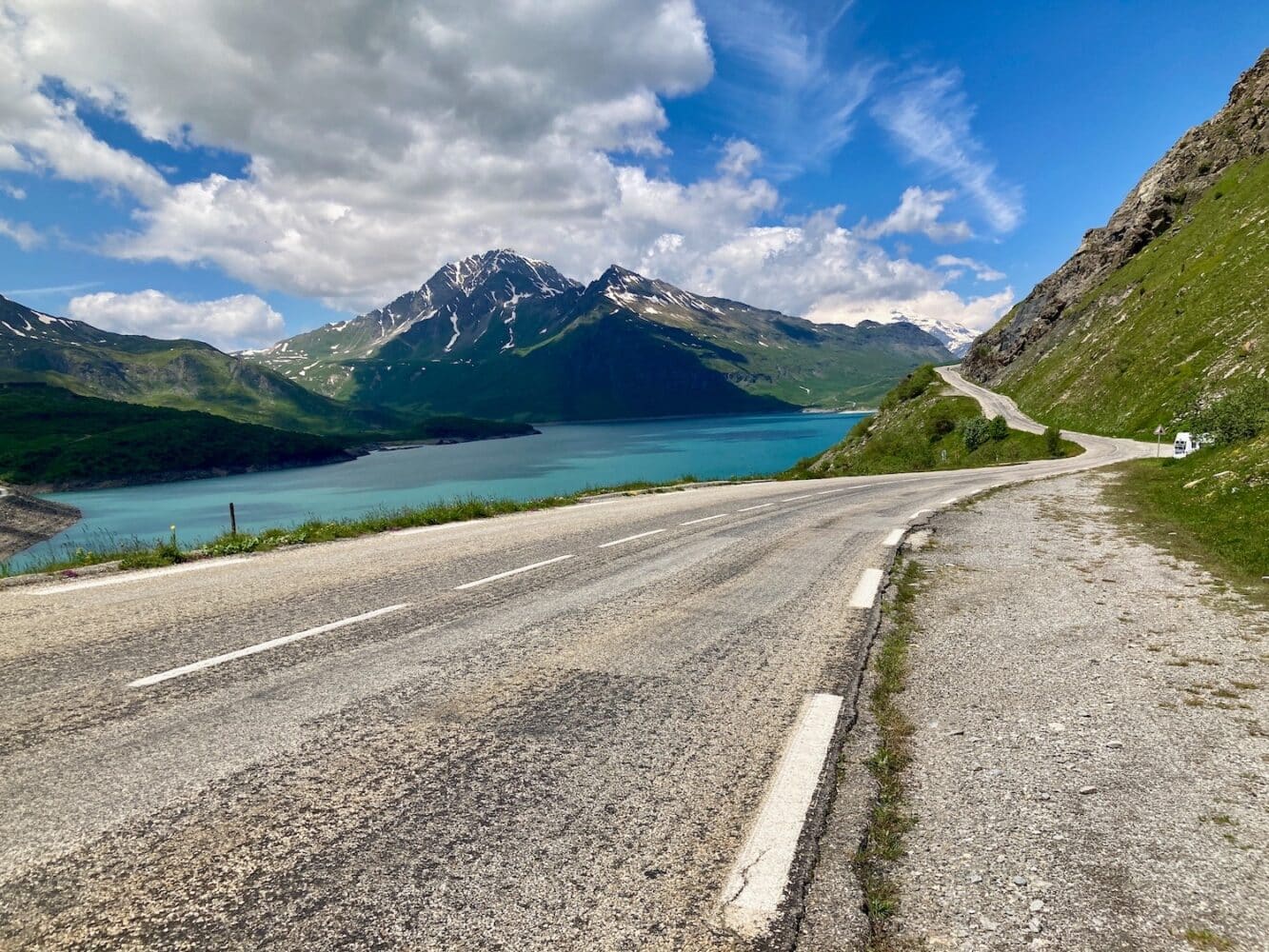

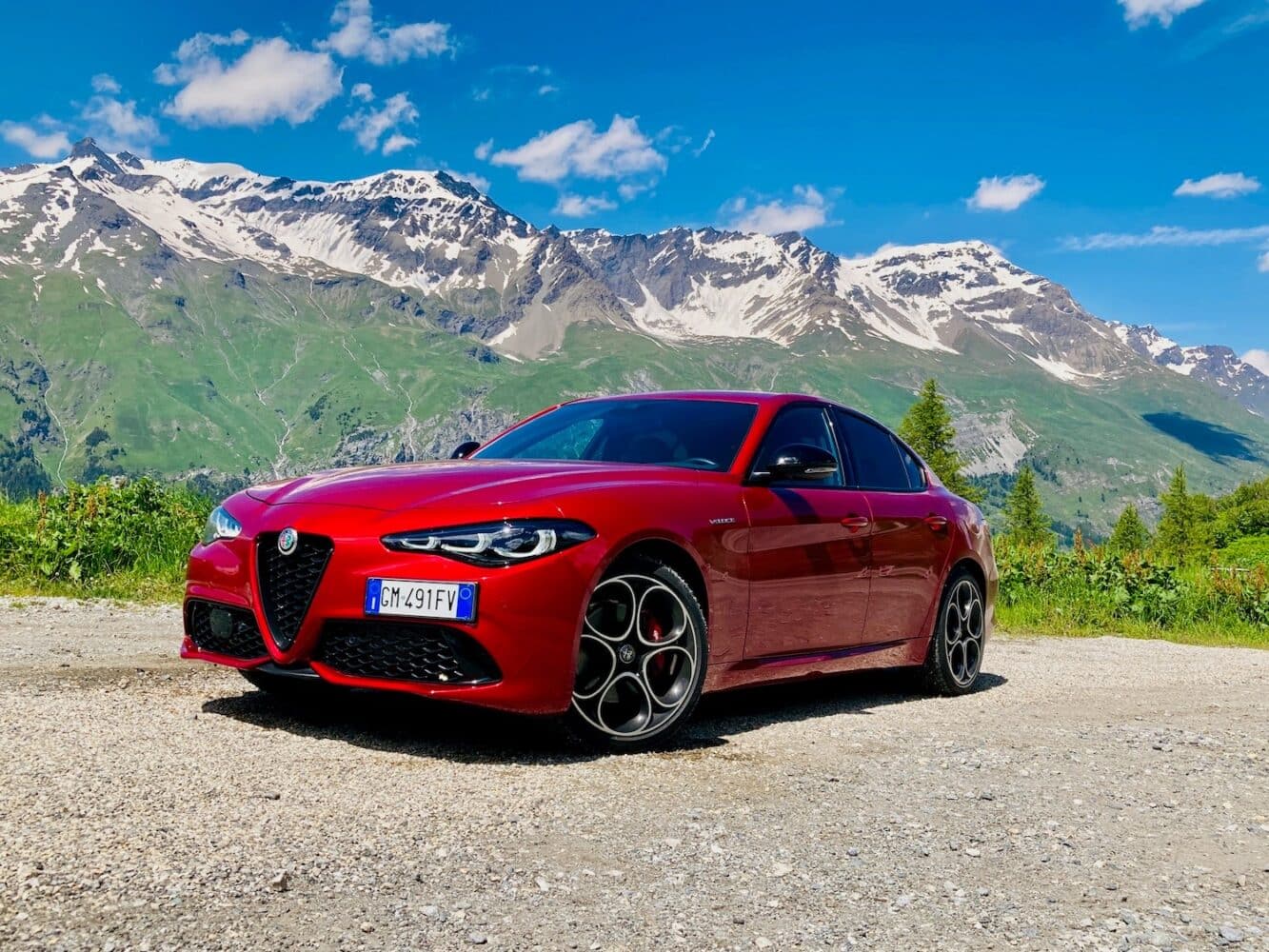
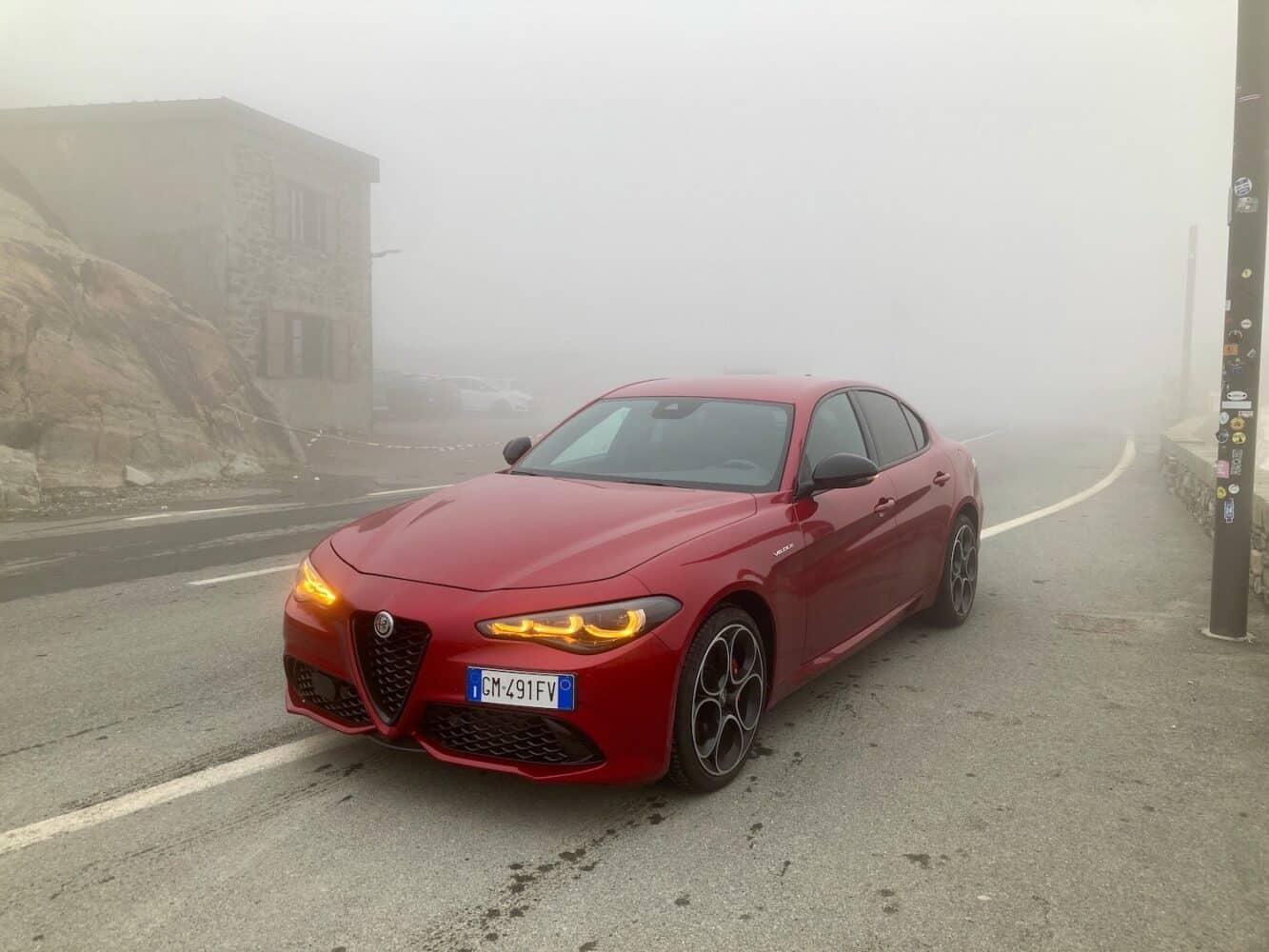
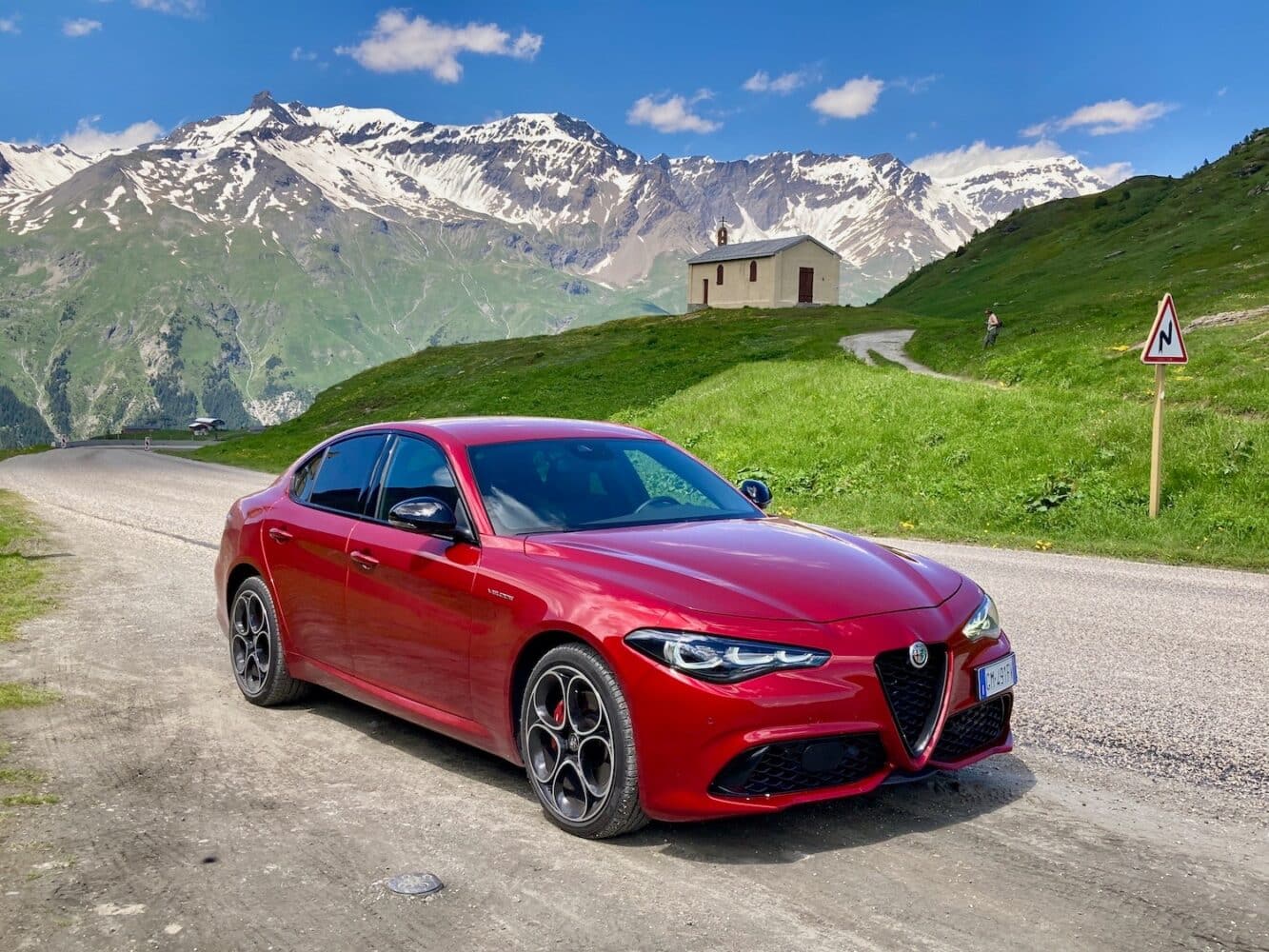

All this way, all these years of waiting. There’s only one thing for it, of course. I shall have to come back again and pray for better weather next time.
From the top it’s maybe an hour drive back down to the link back to Turin. On the autostrada, at an indicated 120 km/h in top, the Giulia is ticking over at just 1500 rpm. Like this, it’s completely smooth and unfussed, even Lexus-like.
It’s one of the highest paved mountain passes in the Alps, reaching an altitude of 8,100 feet (2,469 meters). The mountain pass is located in the Pennine Alps, on the border between Italy and Switzerland.
Key points about the Colle del Gran San Bernardo:
- Stunning Scenery: The pass is surrounded by breathtaking alpine landscapes, including glaciers, snow-capped peaks, and lush valleys.
- Historic Significance: The pass has a long history, dating back to Roman times. It was once a major trade route between Italy and France.
- Hospitable Monastery: At the summit of the pass, you’ll find the Saint Bernard Hospice, a famous monastery that has been welcoming travelers since the 11th century. The monastery is home to the Saint Bernard dogs, a breed known for their ability to rescue people lost in the snow.
- Challenging Drive: The road leading up to the pass is winding and steep, with several hairpin bends. It’s a challenging but rewarding drive for experienced drivers.
If you’re looking for a scenic and historic mountain pass to explore, the Colle del Gran San Bernardo is a must-drive.
I can say, Alfas of a past vintage were never quite like this. The adaptive cruise control which automatically keeps a set distance to the car in front proves its worth many times.
Before long, I’m busy central Turin and checking into the NH Lingotto hotel. I’ve been lucky enough to stay here a few times with Fiat. Today, I’m back and on my own coin, and it’s fine. The hotel is as historic, characterful and welcoming as ever.
So let’s review, shall we? The Alfa Romeo Giulia might be getting on a bit now but it’s still a handsome beast. That distinctive front end styling hasn’t aged at all. The test car’s colour, Rosso Etna, an attractive deep metallic red, suits it so well.
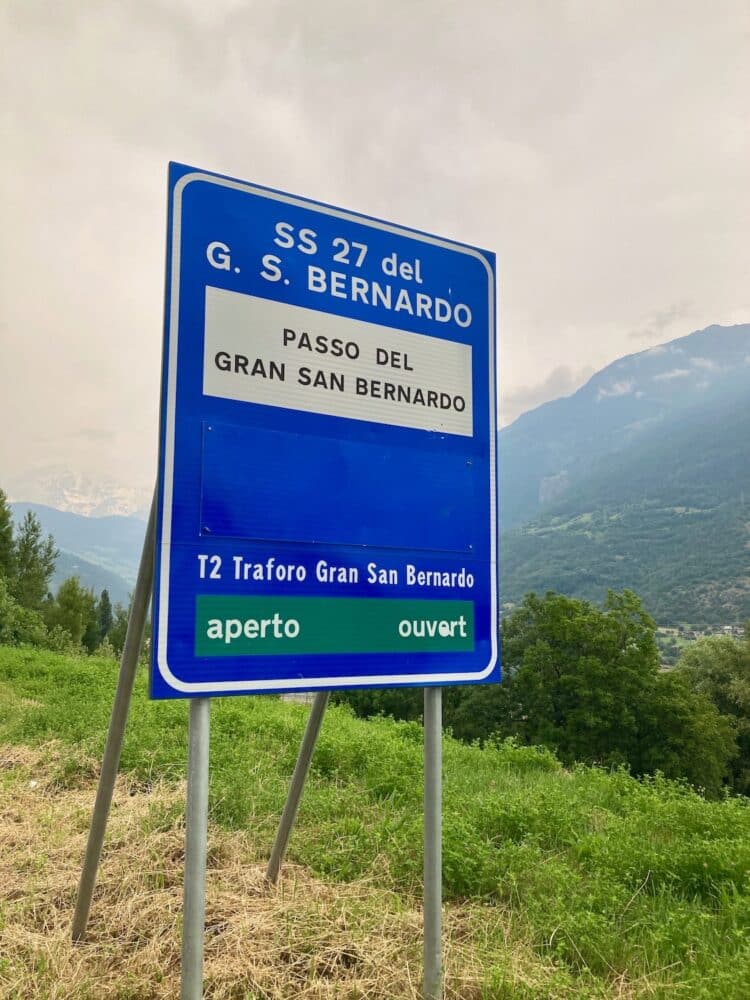
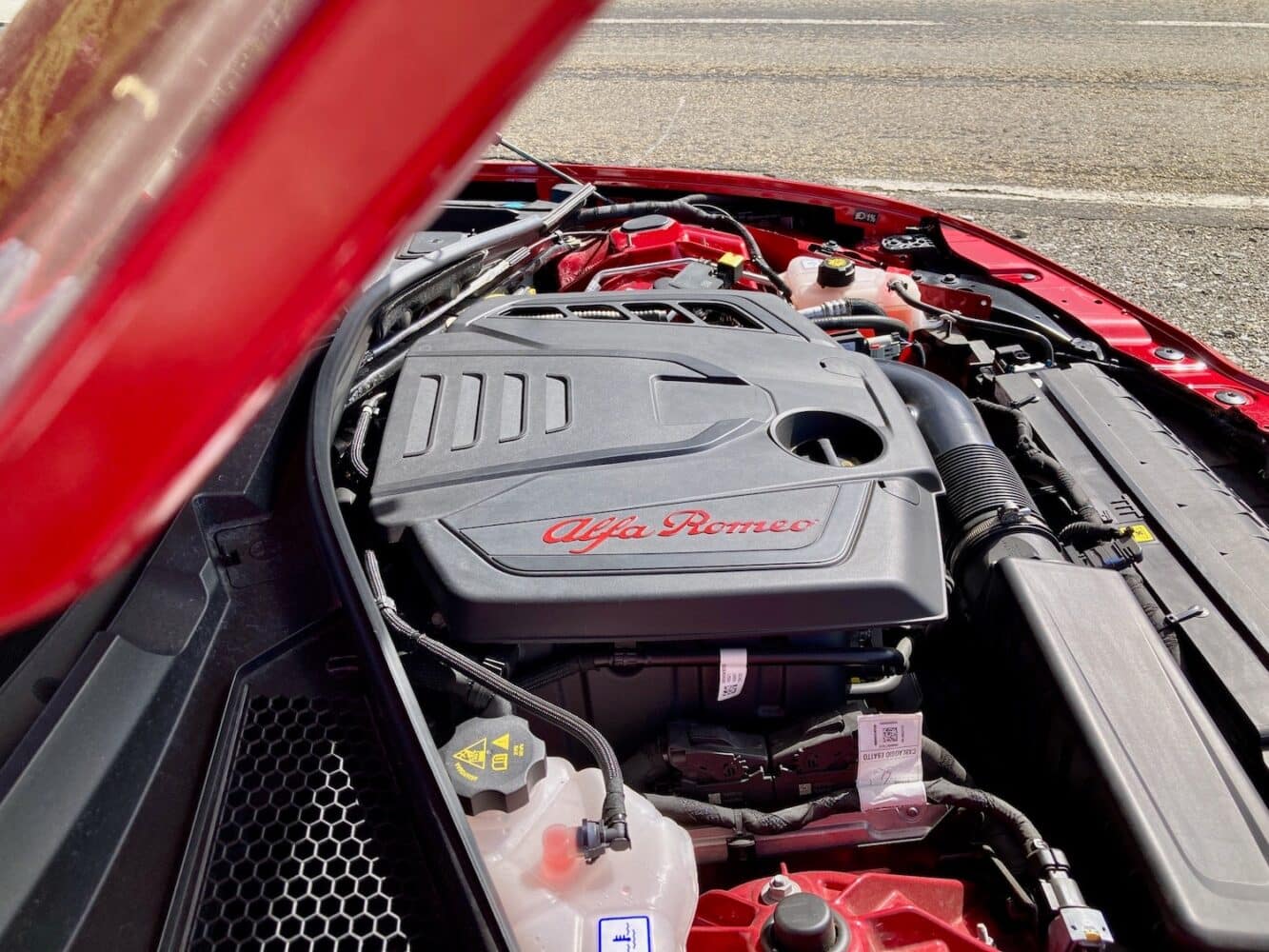
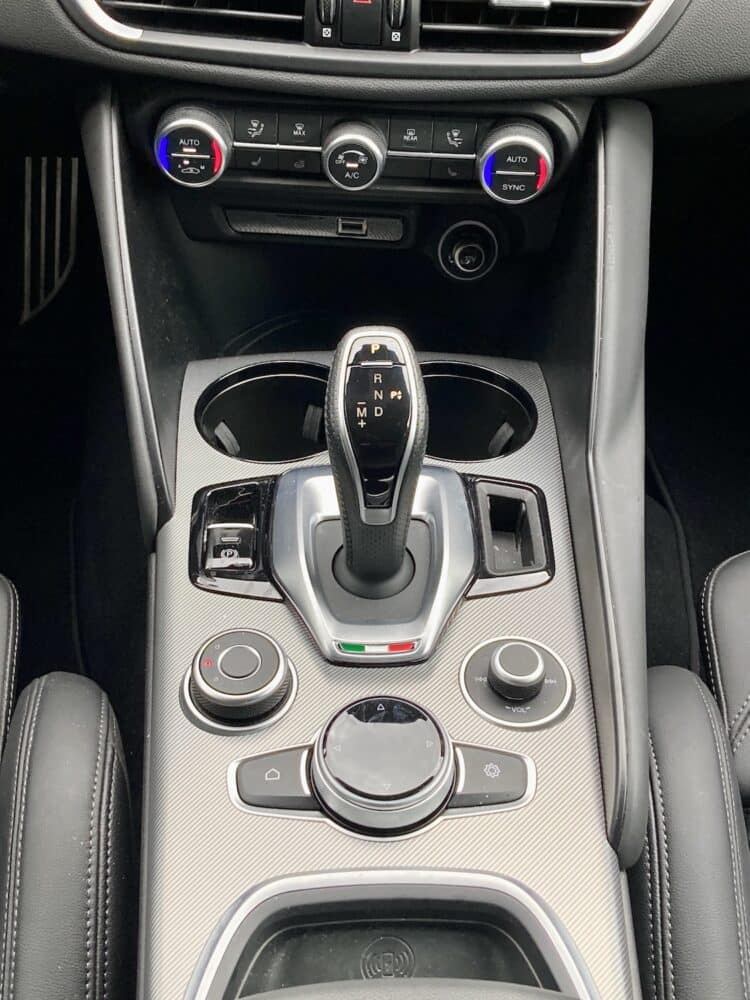
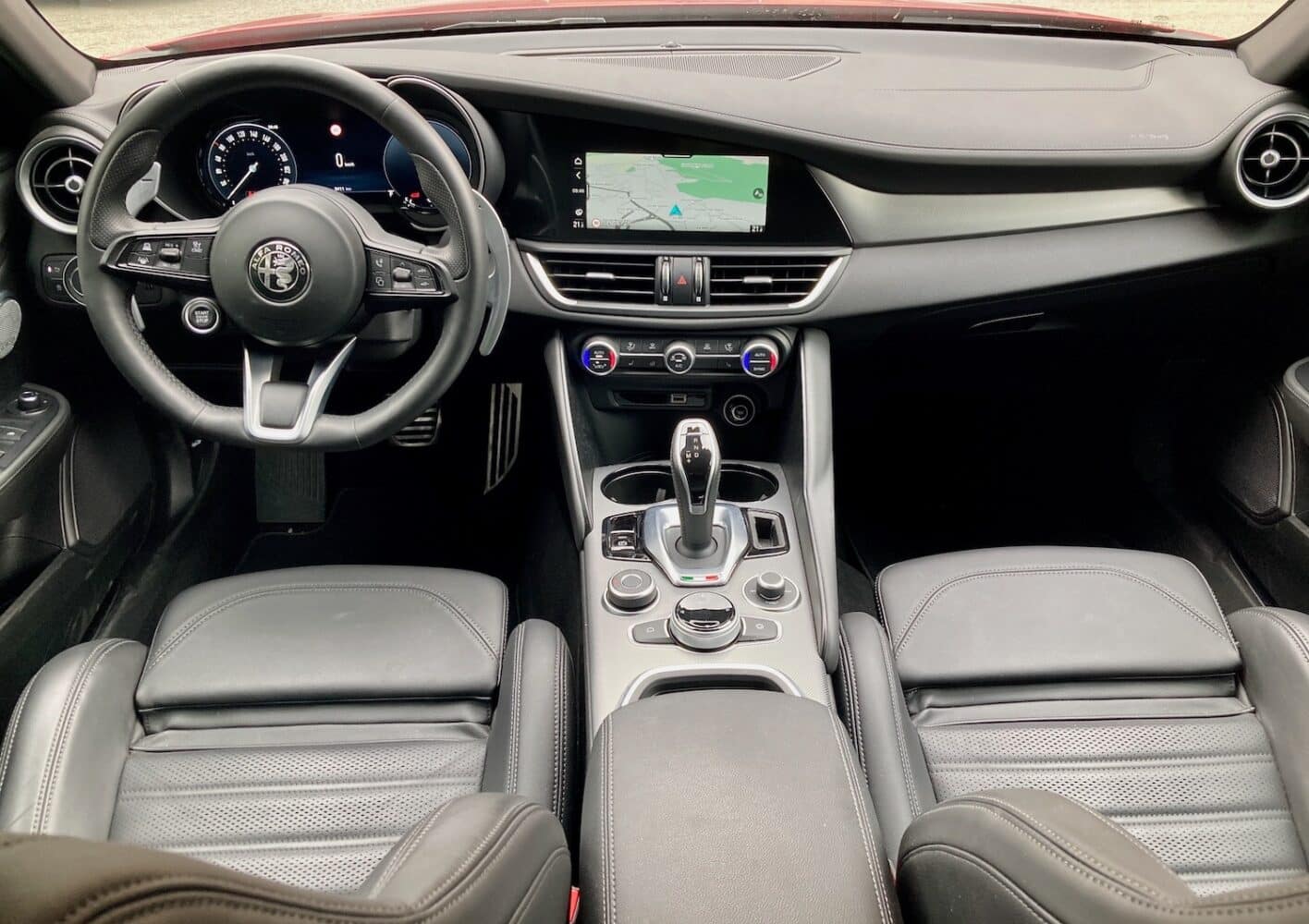
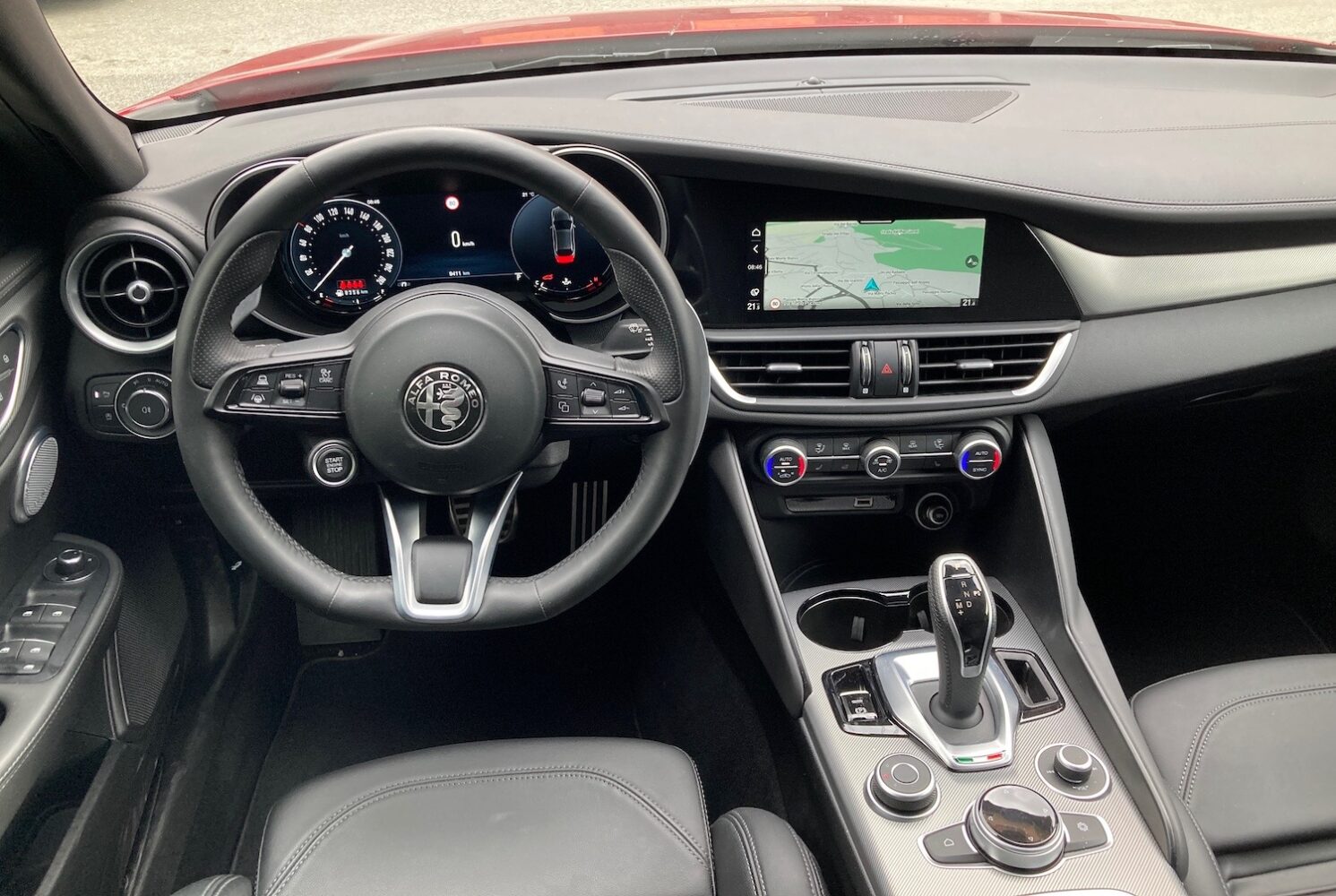

The interior with stylish black leather sports seats has also held up but some aspects do show their age. The sat nav, operated by a rotary dial, still has that small screen and is fiddly to operate. Overall, the cabin’s still comfortable and functional, with good room for four (five at a pinch).
Over the course of some 450 miles of my Italian/French odyssey, mainly pacing through those fabulous mountains, the Giulia Veloce averaged 26.8 mpg: about the same as the UK Veloce I’ve tried. Take it easy and you’ll surely get 30 mpg-plus.
It’s hardly next gen stuff but then the Giulia wasn’t built as an all-out economy champion and all these things are relative.
Things will change dramatically in a year or so as the next, all new Alfa Romeo Giulia will be unveiled. And that’s going to be electric and a completely different car.
So here and now, while it’s still on sale and maturing nicely, let’s hear it for today’s traditionally engineered Alfa Giulia Veloce. Yes, it’s still got it.
Still a characterful, stylish Italian sports saloon, an appealing alternative to all the inevitable crowds of BMWs and Audis out there.
Oh yes, and there’s still something about a red Alfa in Italy, isn’t there?

Peter Nunn
Motoring writer
As a motoring journalist, he’s been writing about cars for a long time, starting in London in fact around the time the Sex Pistols first began limbering up….
Thereafter his journalistic remit has covered both new and classic cars, some historic motorsport reporting plus a long spell in Tokyo, covering the Japanese car industry for a range of global media outlets. Peter is a car writer and tester in the UK. Gooner, Alfisti and former Tokyo resident. If it has wheels, then he is interested.

